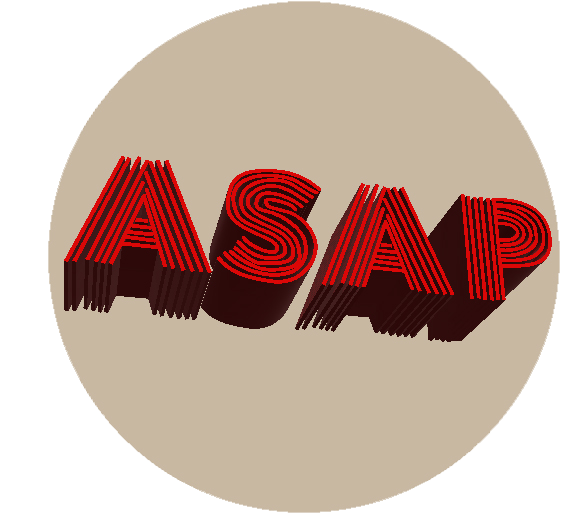APRIL 2025: Ailene Pasco
Statement:
Liberty Crochet Mural Nevada x A Woman’s Worth is a mash up of two projects that Ailene Pasco coordinated and curated in contribution to the women’s rights movement. Liberty Crochet Mural Nevada is the Nevada chapter of the Liberty Crochet Mural project created and coordinated by fiber artist, Jen Lamastra. Lamastra expressed her anger by rounding up other fiber artists to create a 40-piece crocheted mural measuring out to 17 feet by 11 feet. Since June 2022, more than 25 other states have organized murals in their community. Nevada’s mural started in November of 2023. Local crochet artists ranging in skill level came together and crocheted the 40 pieces. It’s debut showing was in October of 2024 at the Recycled Propaganda Gallery.
Collaborating Artists:
Anahi Bravo, Bertha Gutierrez, Danni, Eunice Bravo, Flynn Wichowski, Heather Whaler, Ingrid Roze, Janet Hori, Kay Nguyen, Kellylynn, Kristen Thorp, Krystal Neal Burdic, Marla Turk, Melissa Federowicz, Michael RedFeather, Mickey Sprott, Nancy Good, Nancy Mozelsio, Sarah McMullen, Sarah Siameh, Sok Aguilar, Stephanie, Victoria M, Violette Lovelace, Yanet Pacheco, Zahra Bilal
JULY 2025: Krystal Ramirez
I am interested in creating communal spaces of reverence and devotion. My work acknowledges the role of immigration in the greater diasporic histories of the United States and the unseen factors and conditions attached to labor’s extensive chain of power. I address the physicality of labor with refuges that render construction work a visible process of materiality and shared knowledge. My work not only creates Zones of Contact for introspection but also connects to the communities in which it exists by engaging with hidden stories and histories shared by the communities in which the work exists. Aesthetically, I draw inspiration from my initial sensory encounters with the Catholic church and the neon-soaked expanse of the Las Vegas desert, my home. I delve into the language of light, color, and architecture. The sensorial spectacle in my work intersects with articulating spiritual spaces, augmenting the contemporary baroque display's experiential and commanding presence. A characteristic of my practice lies in my recontextualization and abstraction of words, a deliberate injection of instability into language. This instability creates situations that push the boundaries of communication, inviting viewers into a realm of constant reevaluation of language. Everyone shares the anxiety of unfamiliarity with language and knowledge. The visually glitched language becomes a physical manifestation of experiences often lost in translation. By interweaving personal memories with collective cultural experiences, I construct narratives that meld the intimate with the communal, offering a nuanced exploration of the American experience. These explorations span media, including photography, painting, installation, sculpture, and fiber arts. I received my BFA in Studio Art from the University of Las Vegas, Nevada, and a Master of Fine Arts in Art Practice from Stanford University. I've shown in museums and galleries throughout the United States, including the Nevada Museum of Art (Reno, NV), Barrick Museum of Art (Las Vegas, NV), NMSU Art Museum (Las Cruces, NM), SOMArts (San Francisco, CA), and Gallery 400 (Chicago,IL.)
AUGUST 2025: Marie Martelly TBA
Untitled, 2024, Acrylic and Flashe on canvas, 16 × 18 in.
Audrey Barcio’s paintings merge feminist symbology with the esoteric science of sacred geometry. Descendent and ascendent triangles form within her compositions to impart structures of strength and power. Combined, these forms are suggestive of equality, balance and sustainability.
Audrey Barcio is a 2021 Joan Mitchell Fellowship nominee and 2019 Pollock-Krasner Foundation Grant recipient. She earned her MFA from the University of Nevada, Las Vegas, and her BAE from Herron School of Art and Design and has completed residencies at the Pont -Aven School of Contemporary Art, Vermont Studio Center, and Rodgers Foundation. Her work has been featured in New American Paintings, New Art Examiner, Occhi Magazine, PATTERN, NUVO, and Las Vegas Weekly. Recent exhibitions include solo shows at Tube Factory, Syracuse University, Czong Institute for Contemporary Art, Echo Arts Bozeman, and New Harmony Contemporary. Her work is included in the collection of the Marjorie Barrick Museum of Art, Las Vegas, Czong Institute for Contemporary Art, South Korea and the Rogers Foundation. Barcio splits her time between Chicago, IL and Muncie, IN, where she is an Assistant Professor at Ball State University.



